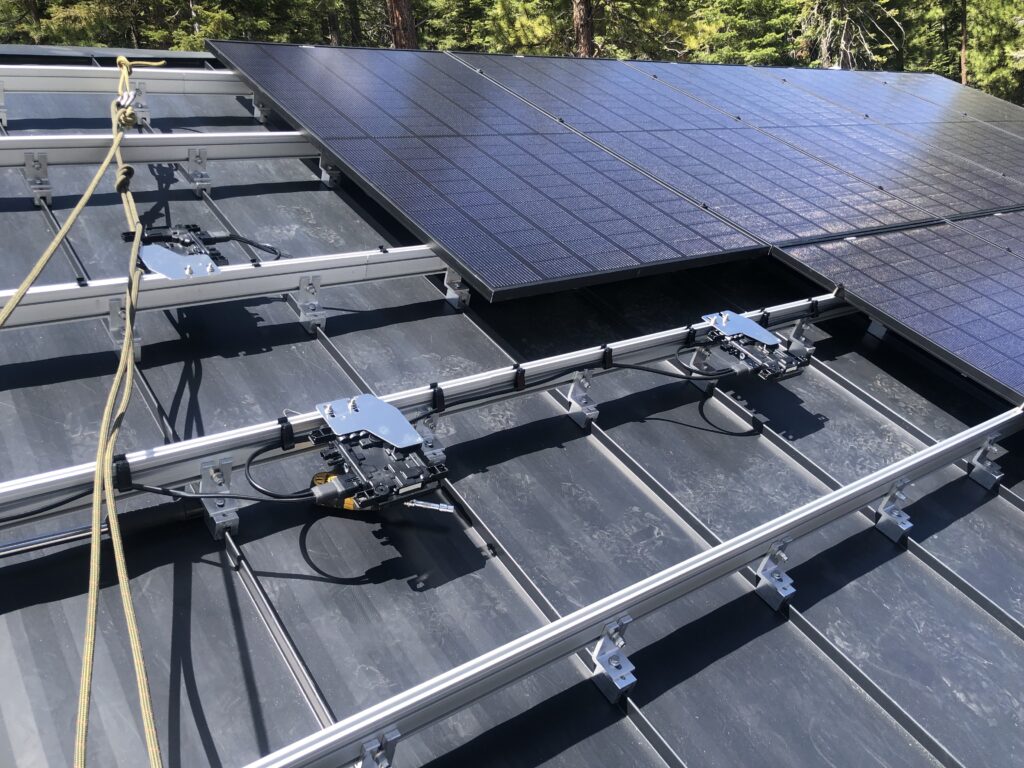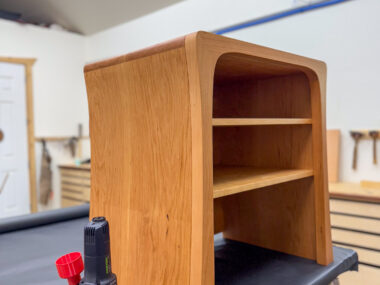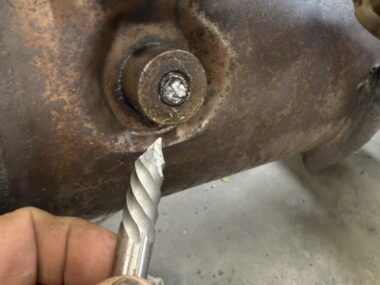Part 1: The DIY Solar Install

Goals
Our main goal with solar is energy independence, but to utilize the power grid as our “battery”. I know with NEM 3.0 in California that a battery backup is recommended, but I decided to first go without one. This is because we have Liberty Utilities, which operates a little bit differently than PG&E.
Our home has a hill on the south west side, which blocks a lot of the afternoon sun in the summer, and severely limits the amount of winter sun we get. We also have a ton of large trees that give a lot of shade. I was pretty set on putting the panels on the new workshop/garage roof, as it had a lot of surface area, and would be the easiest for me to remove snow from. Our main house roof shape would involve a lot of convoluted conduit design and would spread the panels over a bunch of inefficient areas, but it does have a small area of perfect south facing that would be ideal for just a few panels.
I did some rough electricity use calculations, and figured on wanting around 15 kw of panels to roughly cover our energy needs over the course of an entire year. During winter, we will still likely consume more electricity than we produce, but it should average out based on summer production. I have no idea if this is right, and I’ll only know for sure after a year or so of watching the actual use.
Snow: We get a ton of snow (254 psf), and this was also a big consideration for us. In general, our area requires three rails per panel, where normal areas people use two rows. We also needed panels that were super strong, and some of the strongest are the REC panels.
Getting Solar Quotes
I got a lot of quotes! First of all, I’m going to ignore the federal tax credit, as I want to compare everything equally.
There are some aggregate sites, such as EnergySage, that make getting multiple quotes really easy. For around a 13 kw to 15 kw system, quotes were around $40,000 to $45,000. I’m also pretty positive that their systems would not be adequate for the amount of snow load we get in Truckee, and actual costs would be higher once they did an actual system design. Some other quotes, with a battery backup, were upwards of $90,000. Mona Lee, another online quoting system, was also around $40-$45k. I also contacted one of our local installers, and 13kw was $48,000 — and I know they were adequately considering the snow load and additional costs to deal with that.
I was strongly considering doing DIY with a company called Project Solar, which had pretty good rates and would allow me to have a contact to ask questions when something was confusing. They were estimating a 15kw DIY install to be $28,000, which wouldn’t include some accessories like conduit, fittings, and additional wiring (which could easily be $1,000). However, the solar panels they spec’ed were not strong enough to withstand the snow load, and the data sheet clearly stated this. I told them we needed REC 405 or REC 410 panels. They could get them, but the additional cost was around $5,000, bringing the total to around $33,000, plus another grand for the additional DIY needs. I also think they were not factoring in three rails, so the cost would have likely been more once it was finalized.
At this point I started to wonder what the base cost of materials would be, as $40 to $50k was way out of our budget. I did start to get an idea on where people were recommending to put panels, and it seemed sort of split as to what was the best side of my garage to do it. I decided to get some rough DIY material quotes from suppliers in California, and found Solar Electric Supply in Scott’s Valley and Tandem Solar Systems in LA. Both were similar in prices, around $22-$23k for materials (it would become more), but shipping proximity and sales tax started to affect prices by about $1000-$1500. Tandem could ship from Sacramento, which was way closer than Solar Electric’s warehouse in San Jose, and taxes were about 1% cheaper at Tandem. I really liked talking with the guy who worked at Solar Electric Supply, but Tandem Solar had the edge on price, location, and availability (less lead time).
Tesla Solar
Of course, I had to get a Tesla Solar quote. A few years ago I looked into it, and Tesla wasn’t installing in the Truckee area, but now they are doing it. I requested 15 kw and it was going to be $36k as a rough estimate. I thought it was worth it at the time, and I started the process to go through with it. Eventually I realized they wouldn’t install on a metal roof, which is what our garage has. I cancelled the order…but in true Tesla fashion they didn’t really cancel it. A few weeks later a guy showed up to evaluate the site…and I told him about the metal roof, but he said if he was there then they could do it. So, he measured the garage roof, and the house’s roof, which is a composite shingle.
Eventually Tesla made a roughly 12kw design on the house, which isn’t where I wanted. Finally they did come out and say they can’t install on a metal roof, so I did get them to cancel the order.
I probably would have gone with Tesla if the could have done 15kw on my metal roof.
Micro-inverters vs String Inverters
If you get lots of sun, string inverters are more efficient than micro-inverters. String inverters can also avoid any DC to AC losses when you install a battery. String inverters can use modern power optimizers to help with shading issues, but I feel like micro-inverters are still the best way to go when you get a lot of shading. So, I decided on micro’s because of shading, and the fact that I didn’t initially want a battery backup. I can still add a battery backup, but there are going to be more efficiency losses: DC from the panels is converted to AC by the micro-inverters, and then the AC is converted back to DC when it goes into the battery, and finally it is converted again from DC to AC when power is drawn from the battery.
The Bottom Line
I figure I could save 40% to 50% of the cost of a full installation by doing it myself. I was originally shooting for around $20,000, but my initial estimates of it being around $23,000 sounded okay to me, so I decided to go the DIY route. Eventually it wound up being a lot more…and I’ll talk about that in the next post!
Next post: the planning process, the base material costs, and the final costs.






15kW, yeah that should break even when covered in the winter!
Hah, yeah! It really only takes a day before the snow slides off the metal roof, so I’m hoping to get some energy..we’ll see!
[…] Part 1 of the DIY Solar Install I talked about some of our decisions on why to go DIY. It really came down to cost, and I’ll […]